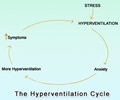A study published in the online edition of Neurology projects the total cost of ischemic stroke from 2005-2050 will total $2.2 trillion with lost income from younger stroke victims playing a major role.
The study, based on two major stroke studies BASIC and NOMASS, looked only at the costs of ischemic strokes, which account for the majority of all strokes. They included the costs of ambulances, hospital stays, medications, nursing home care, doctor’s visits and lost income.The study found lost earning and informal care to be the highest two individual cost contributors followed by costs of initial hospitalization and costs of drugs.
“Interestingly, the younger age group, consisting of the 45- to 64-year-olds, accounts for approximately half the costs in this model, whereas the oldest age group, those 85 and older, accounts for approximately 10 percent of the costs," the researchers wrote.
The total cost of ischemic stroke is projected to be $1.52 trillion for non-Hispanic whites, $313 billion for Hispanics, and $379 billion for African Americans. "The risk of stroke is highest in minority groups such as blacks and non-white Hispanics," said Dr. Devin Brown, an assistant professor of neurology at the University of Michigan stroke program, and lead author of a report in the Aug. 16 online issue of Neurology.
Following the findings of the study, the American Academy of Neurology (AAN) has urged increased funding for stroke research by the National Institutes of Health (NIH).
Catherine Rydell, CEO and Executive Director of the AAN said, "The NIH has the ability to perform the research that can save countless lives and billions of dollars in healthcare costs if Congress would adequately fund its mission." The AAN wants the fiscal year 2007 NIH budget increased by five percent or $1.4 billion to $30 billion.
Advertisement
The study stressed on the importance of more public education about stroke symptoms and when to call 9-1-1, so patients could get treated earlier. The authors of the study have also noted that more emphasis on stroke prevention efforts, such as better blood pressure control, could also be beneficial.
Advertisement











